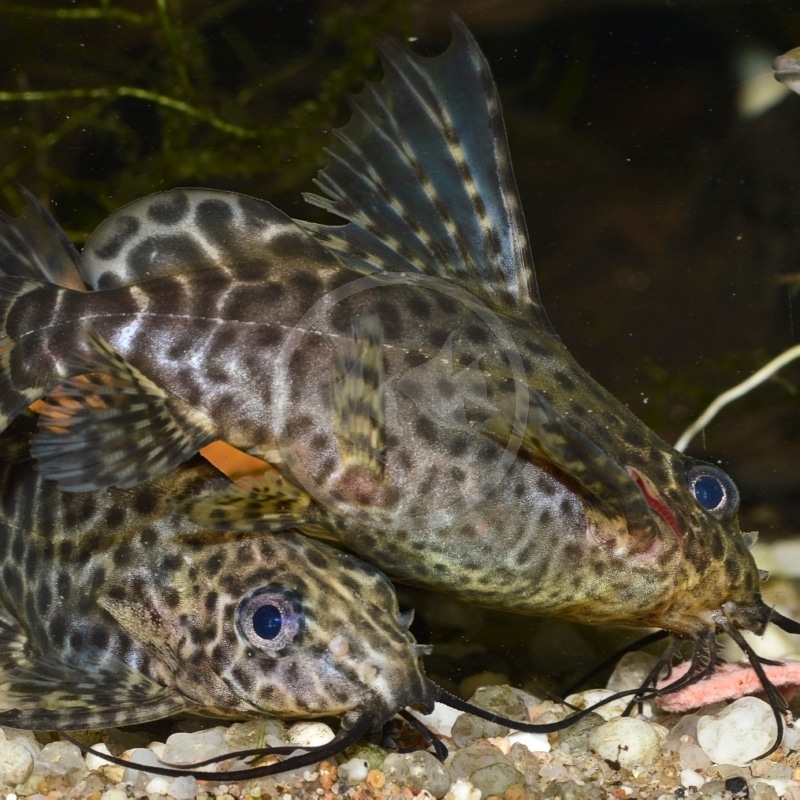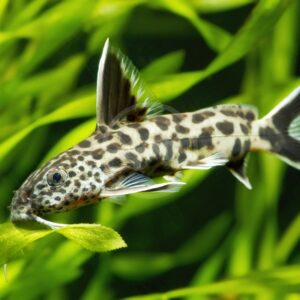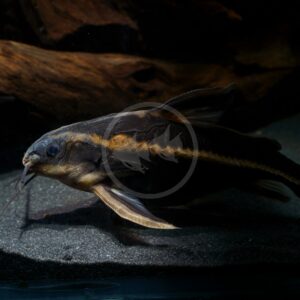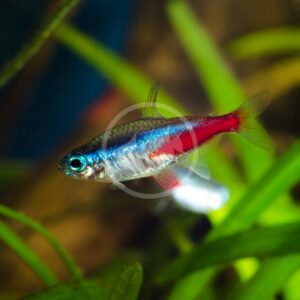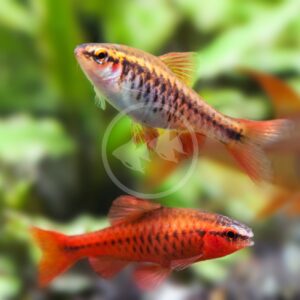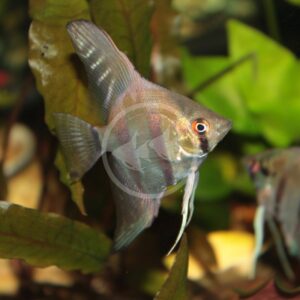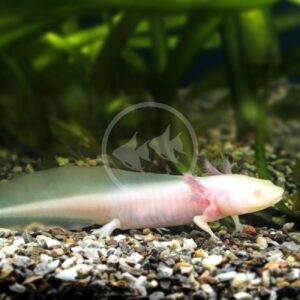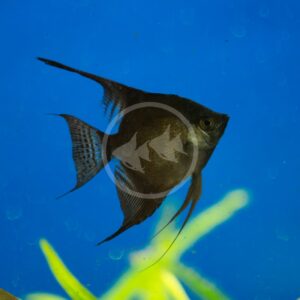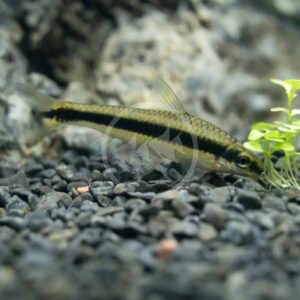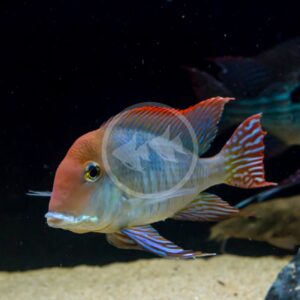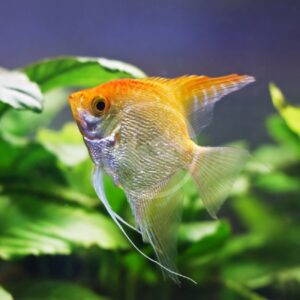Care Level: Easy
Temperament: Semi-Aggressive
Live Plant Safe: With Caution
General Description: The Featherfin or Eupterus Synodontis Catfish, also referred to sometimes as the Featherfin Squeaker because occasionally it will be heard grunting in the aquarium, is found in a number of habitats across rivers and lakes of Africa. Synodontis is the genus of catfish that are found across the continent of Africa, with more than 120 species described including the Featherfin catfish. Named accordingly for its enormous dorsal fin it achieves as it matures, the Featherfin catfish has been a namesake in the hobby for decades for African cichlid aquariums! Featherfin catfish are overall light brown in color, with a darker reticulated pattern as juveniles that changes to spots as adults. This catfish is relatively peaceful so long as it can’t mistake a tank mate for a meal. One of the larger Synodontis catfish available, adult Featherfin catfish have been recorded to reach lengths of 12″ in the wild but between 6 and 8″ is common for the home aquarium.
Diet Requirements: Featherfin catfish are omnivores. A diet made up of various high quality vegetable based and protein based flake foods, algae, sinking pellet foods and bug bites are ideal, in addition to offering frozen foods such as bloodworms, brine shrimp and other freshwater mixes. Variety is the spice of life in order to maintain color, immune function and longevity of your fish.
Care Requirements: A minimum 20 gallon aquarium is ideal for a small juvenile Featherfin catfish. The tank will need to be upgraded accordingly as it grows. This species should not be introduced into a biologically immature aquarium, as it is sensitive to nitrite and ammonia. The aquarium should be aquascaped with rocks and driftwood for coverage and places to hide; some live floating plants are appreciated to diffuse the lighting. Catfish require a sandy to fine substrate; too coarse of a substrate could cause injury to their barbels. Like other catfish, the Featherfin catfish is an opportunistic scavenger, making them very beneficial to have to forage for extra food of all kinds that has fallen to the substrate. Given their size, Featherfin catfish should not be considered for a typical community aquarium. Some territoriality may be displayed toward other catfish if ample hiding spots, in which each can claim a space, is not provided. More than one Featherfin catfish can be kept together successfully if the aquarium is large enough. This species is commonly selected for African cichlid aquariums. Recommended water conditions, 74-78° F, KH 8-20, pH 6.0-7.5.
Purchase Size: Small: 2” to 2-1/2”; Medium: 2-3/4” to 4-3/4”; Large: 5” to 7”; XLarge 7-1/4” or larger.
Note: Your item may not look identical to the image provided due to variation within species. Purchase sizes are approximate.


